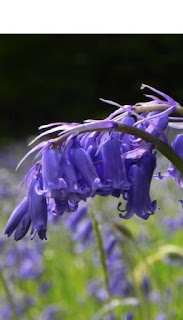 |
| Narcissus 'February Gold' - Graceful and gorgeous! |
Personally I am not a great fan of large yellow daffodils. Yes, they are undoubtedly cheery, and few gardens seem to be without them, but the colour is very bold and their resistance to wind and rain can be questionable. Dwarf daffodils and narcissi on the other hand are a different matter: bright without being brash, early flowering but weather resistant, eye catching but always graceful. Dwarf narcissi are good in sun and shade, they cope with the heavy, wet soil that tulips hate, they are wonderful in pots and containers and some varieties lend themselves to naturalising. They will grow in grass successfully, providing you can resist mowing until after the foliage had died down. They need those leaves to build the bulbs for the following season.
When it comes to naturalising bulbs in grass many will reach for bulk bags of mixed daffodils and narcissi. These may work well if you plant a lot of them in big drifts. In smaller numbers the effect can be very “bitty” as different varieties bloom at different times. In any case they are hardly naturalistic, and if you want to create that meadow effect then you want varieties that look as if they belong in grass.
Narcissus ‘Thalia’ is a good example of a garden hybrid that suits a naturalistic setting. This graceful narcissus produces beautifully poised delicate white flowers on strong stems, two or three flowers appearing on each stem. Double narcissi are best avoided however Narcissus ‘Pencrebar’ is a possible exception. Its double egg yolk blobs are small, graceful and are carried on fine stems. It has a lovely scent and is a long lasting flower. These cultivated bulbs only multiply by producing offsets so spread is slow and they are best focused in small areas of long grass.
The British native wild daffodil, Narcissus pseudonarcissus subsp. lobularis is a delight once established. It has a tiny bulb for a narcissus, more like that of a snowdrop. So buy it now plant immediately before the bulbs dry out and shrivel. Plant in groups of 10-15 bulbs, spacing the bulbs a couple of inches apart at a depth of three times the depth of the bulb. Do not be tempted to plant too deeply. It will establish best in thin grass under the dappled shade of trees in well drained conditions. Do not be tempted to remove the faded flowers, instead allow the seed heads to develop and ripen. In early summer they change to parchment, split and release black seeds.
In pots and containers Narcissus ‘Tete a Tete’ takes some beating. The bulbs are great value so you can spread them around in pots on the patio, in the front of beds and borders and plant a few in pots to bring indoors in late winter. They respond to a little gentle forcing but are always best grown as cool as possible. I love to see them in pots on the patio adding a little sunshine between sky blue pansies and violas and also in small pots on my kitchen windowsill.
 |
| Cheery Narcissus 'Pipit' |
With larger acid yellow flowers flushed with white Narcissus ‘Pipit’ is a bright, cheerful multi-headed variety that works well planted as small groups amongst shrubs and perennials. I like it with the lime green bracts of euphorbia and the early blue flowers of brunnera. In pots it is a good planting partner for forget-me-nots. Pipit’s bright smiling yellow blooms are certain to bring sunshine to the dullest of spring days.
Now I know this is really about narcissi – but I have to mention bluebells too. With the current interest in native flowers I know they will be a hot topic this autumn.
 Hyacinthoides non-scripta, our native bluebell is one of the great delights of the English spring. Its deep sapphire blue colour makes it particularly visible under the shade of trees and it blooms before the grass grows tall enough to obscure its delicate lines. Patient gardeners will find that they can build up large colonies of bluebells from relatively few bulbs by encouraging them to seed. Plant the bulbs individually with a dibber 15cm apart and once the seed heads ripen in summer brush through the fading stems to scatter the seeds across the whole area. Where bulbs are naturalised in grass under trees mow in autumn and remove the clippings and mow again on a high setting in late autumn or winter to remove fallen leaves and top the grass. This will ensure that the blooms appear amongst fresh green grass blades the following spring. Bulbs sold in our garden centres are from cultivated sources and are certified not wild collected.
Hyacinthoides non-scripta, our native bluebell is one of the great delights of the English spring. Its deep sapphire blue colour makes it particularly visible under the shade of trees and it blooms before the grass grows tall enough to obscure its delicate lines. Patient gardeners will find that they can build up large colonies of bluebells from relatively few bulbs by encouraging them to seed. Plant the bulbs individually with a dibber 15cm apart and once the seed heads ripen in summer brush through the fading stems to scatter the seeds across the whole area. Where bulbs are naturalised in grass under trees mow in autumn and remove the clippings and mow again on a high setting in late autumn or winter to remove fallen leaves and top the grass. This will ensure that the blooms appear amongst fresh green grass blades the following spring. Bulbs sold in our garden centres are from cultivated sources and are certified not wild collected. 




No comments:
Post a Comment